
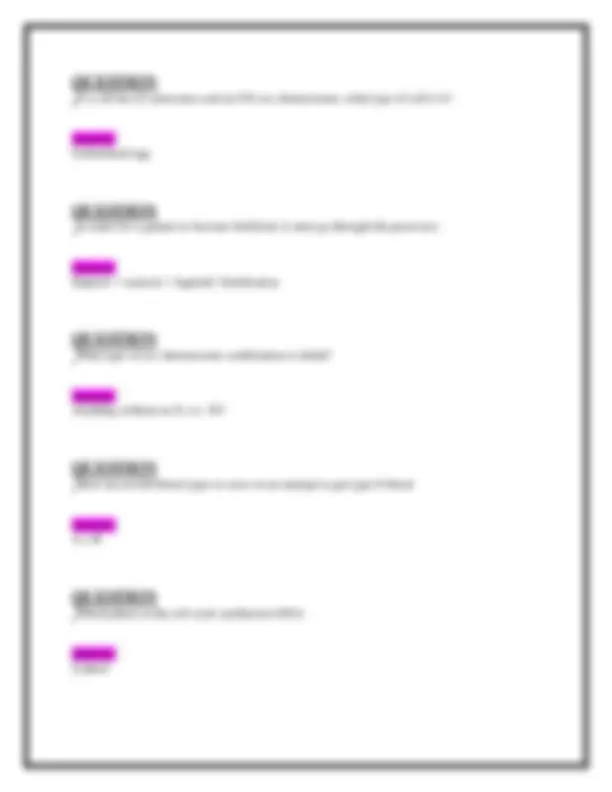

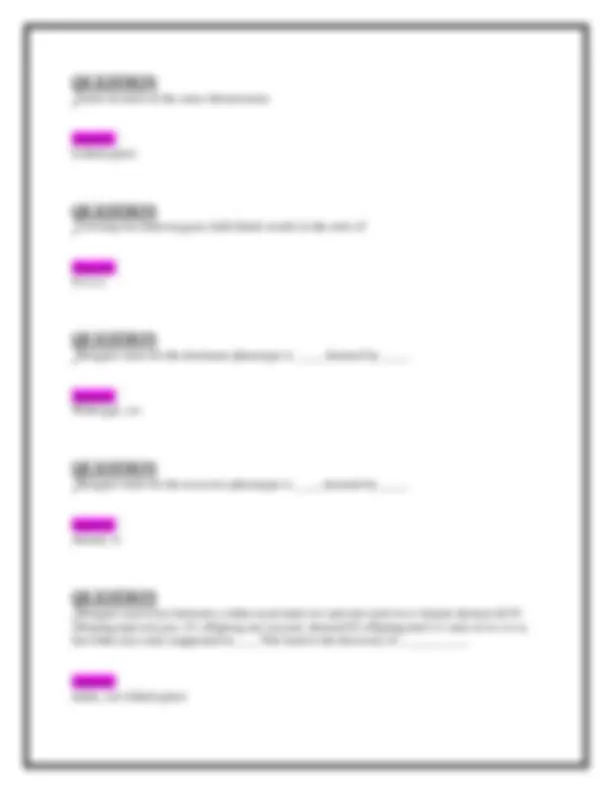
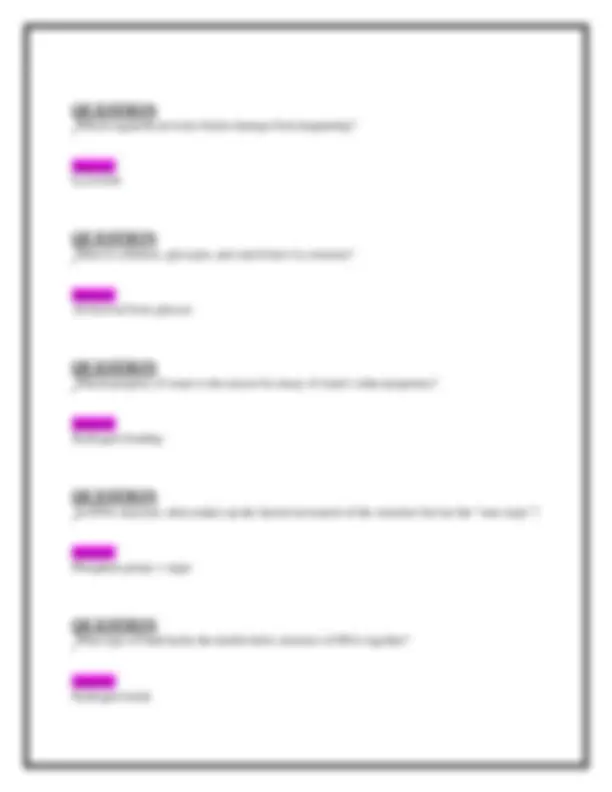
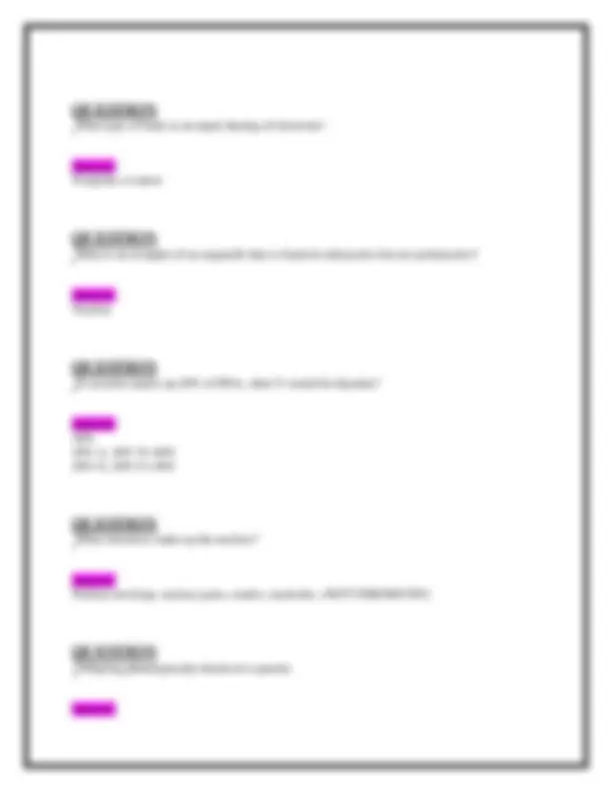
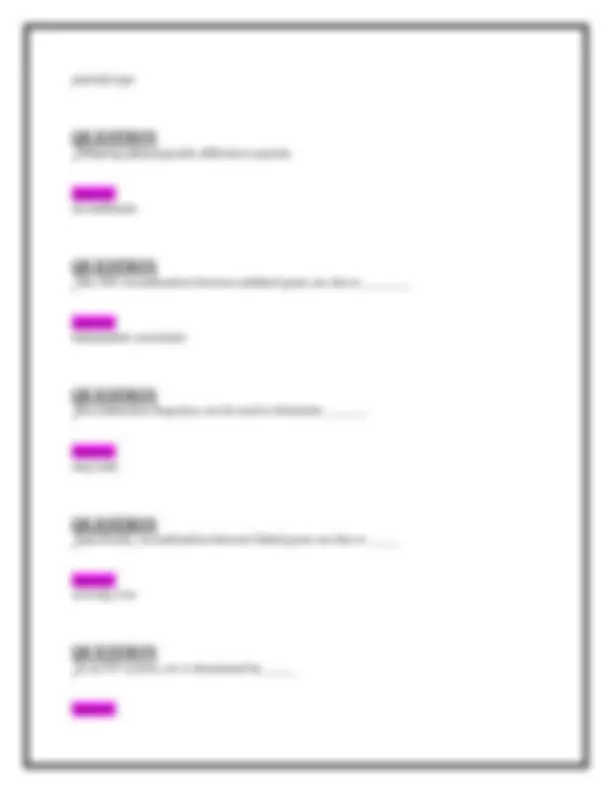
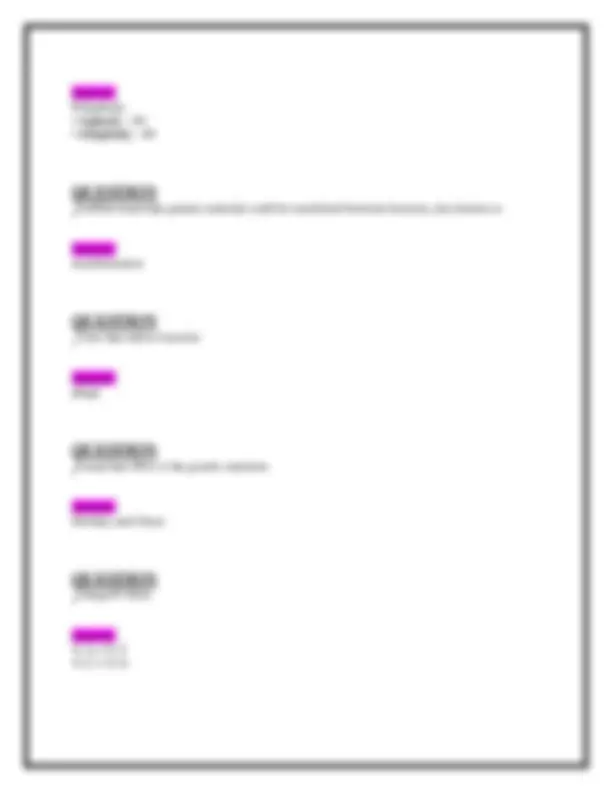
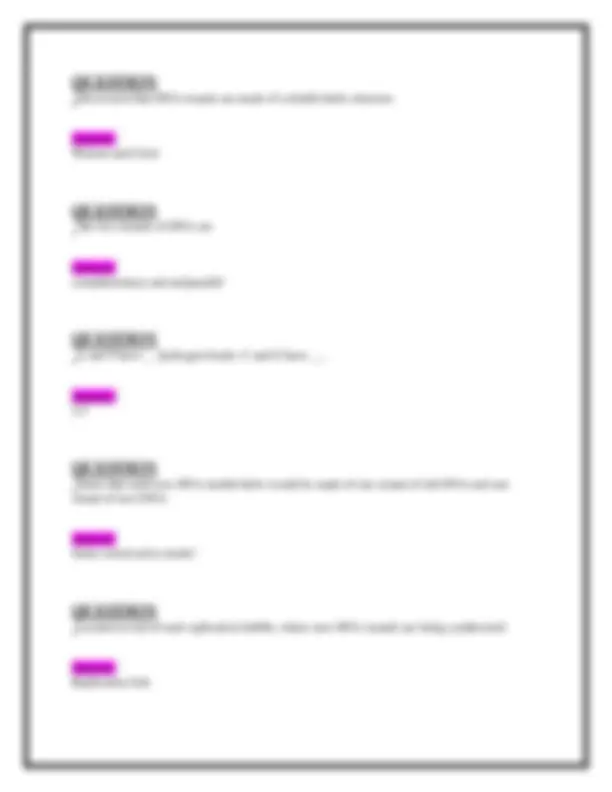
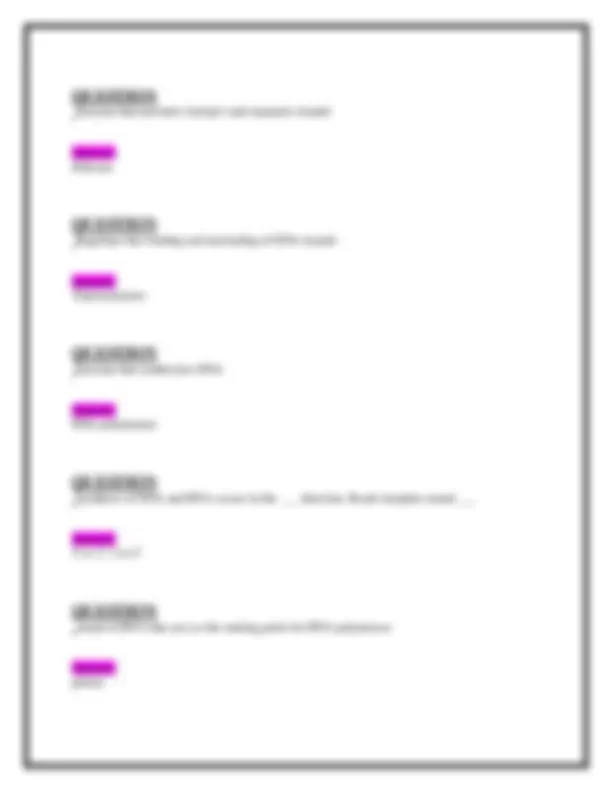
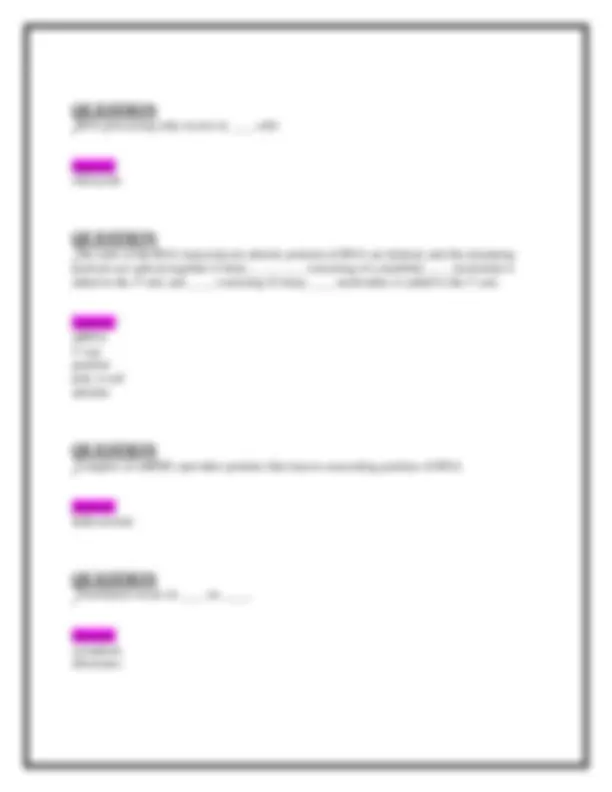
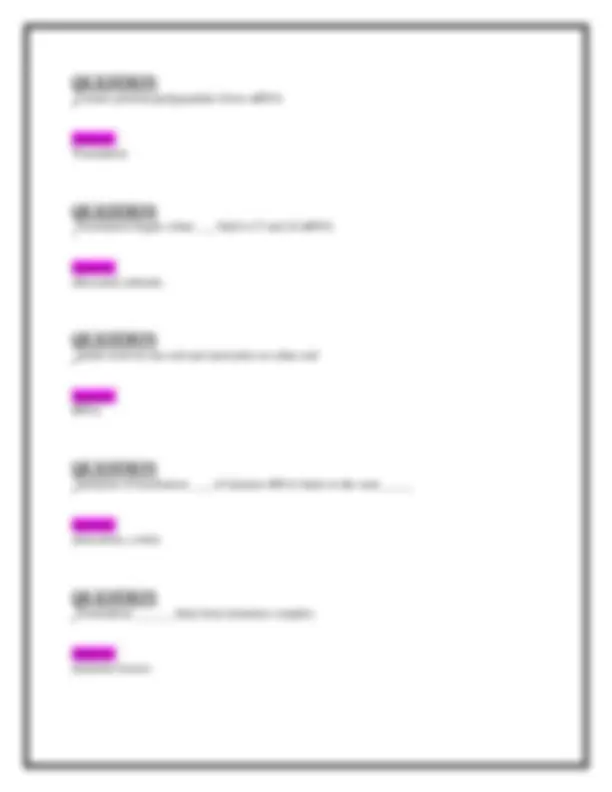
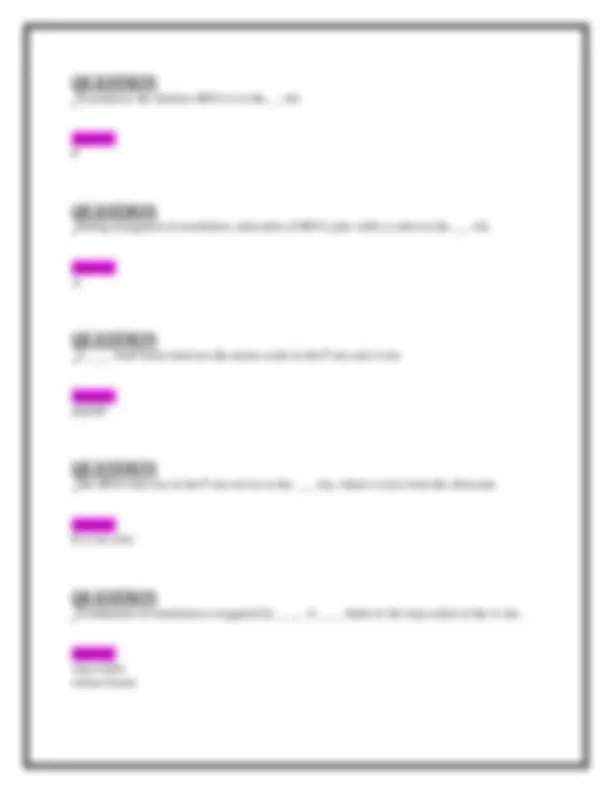
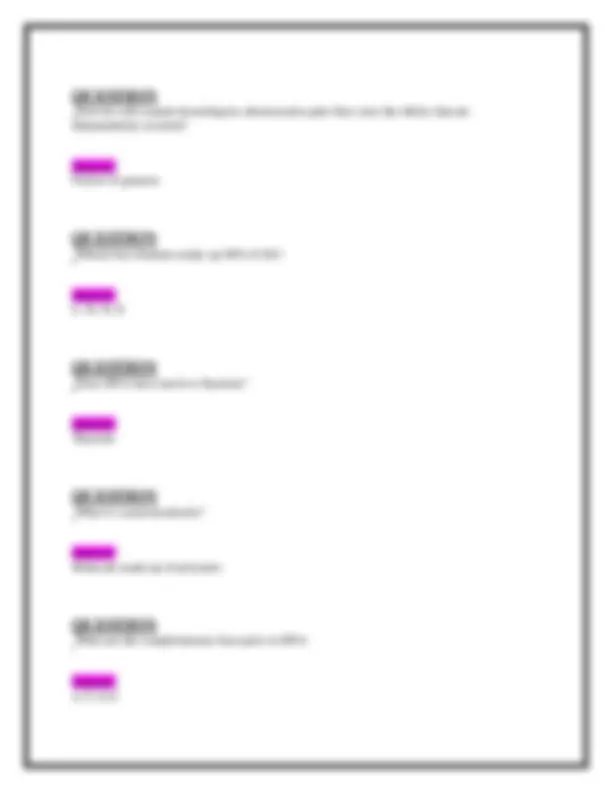
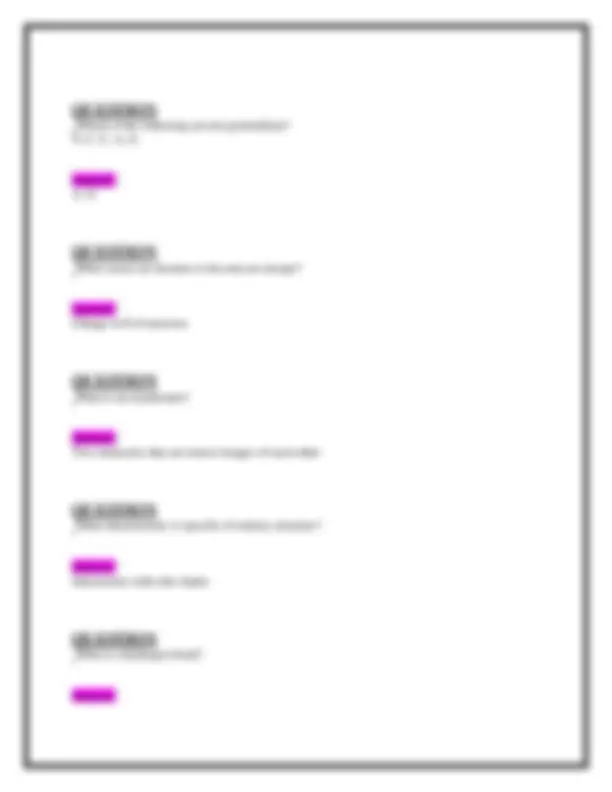
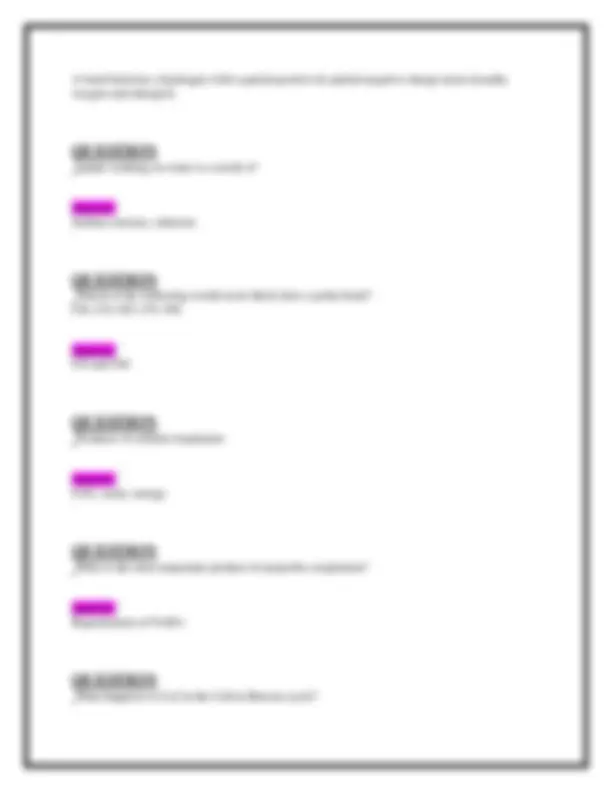



Study with the several resources on Docsity

Earn points by helping other students or get them with a premium plan


Prepare for your exams
Study with the several resources on Docsity

Earn points to download
Earn points by helping other students or get them with a premium plan
Community
Ask the community for help and clear up your study doubts
Discover the best universities in your country according to Docsity users
Free resources
Download our free guides on studying techniques, anxiety management strategies, and thesis advice from Docsity tutors
A comprehensive set of questions and verified answers for the bio1201/ bio 1201 final exam, covering key concepts in biology. It includes questions on dna, chromosomes, genes, photosynthesis, cellular respiration, cell structure, and more. The answers are concise and accurate, making it a valuable resource for students preparing for their final exam.
Typology: Exams
1 / 24

This page cannot be seen from the preview
Don't miss anything!

















How are DNA, chromosomes, and genes related? Answer: Genes are made of DNA, and are located on chromosomes.
What products of light reactions are used in the Calvin Cycle? Answer: ATP, NADPH
Where are the electrons transferred to from photosystem II? Answer: Electron transport chain- thylakoid membrane
What are the characteristics of a solution with a pH of 7? Answer: Neutral, same concentration of OH- and H+ (1 x 10^-7)
How does an enzyme speed up a reaction? Answer: Lowers activation energy
What are the molecules called that capture light in photosynthesis? Answer: Photosynthetic pigments
Which enzyme is involved in DNA replication? Answer: DNA polymerase
Which process expels some material out of a cell? Answer: Exocytosis
What processes require a transport protein? Answer: Active transport, or facilitated diffusion in passive transport
When does synapsis occur? Answer: Prophase I (meiosis I)
Name pH in their varying ranges of acidity and basic Answer: pH 1= very acidic, pH 4= slightly acidic, pH7= neutral, pH 10= slightly basic, pH 14= very basic
Stages of mitosis Answer: prophase, metaphase, anaphase, telophase
Alternate form of a gene Answer: Allele
tRNA has Answer: amino acid on one end and anticodon on other end
Genes located on the same chromosome Answer: Linked genes
Crossing two heterozygous individuals results in the ratio of Answer: 9:3:3:
Morgan's term for the dominant phenotype is ____, denoted by ____. Answer: Wild-type, w+
Morgan's term for the recessive phenotype is ____, denoted by ____. Answer: mutant; w
Morgan's test:Cross between a white-eyed male (w) and red-eyed (w+) female showed all F offspring had red eyes. F1 offspring are crossed, showed F2 offspring had 3:1 ratio of w+ to w, but white eyes only reappeared in ___. This lead to the discovery of ___________. Answer: males, sex-linked genes
Which molecules can cross the membrane the easiest? Answer: Nonpolar, small
Which isomer has a carbon-carbon double bond? Answer: Geometric/cis trans
Why is carbon the most versatile organic element? Answer: Ability to make 4 bonds
Which type of group would a hydroxyl group most likely bond to? Answer: Polar
Which organelle synthesizes proteins? Answer: Rough ER
Which organelle prevents future damage from happening? Answer: Lysosome
What to cellulose, glycogen, and starch have in common? Answer: All derived from glucose
Which property of water is the reason for many of water's other properties? Answer: Hydrogen bonding
In DNA structure, what makes up the lateral movement of the structure but not the "stair steps"? Answer: Phosphate group + sugar
What type of bond holds the double helix structure of DNA together? Answer: Hydrogen bonds
parental type
Offspring phenotypically different to parents Answer: recombinants
The 50% recombination between unlinked genes are due to ________ Answer: independent assortment
Recombination frequency can be used to determine _______ Answer: map units
Specifically, recombination between linked genes are due to _____ Answer: crossing over
In an XY system, sex is determined by _____ Answer:
male gamete
In an XO system, sex is determined by _____ Answer: number of sex chromosomes
In an ZW system, sex is determined by _____ Answer: female gamete
Since males are XY, they are referred to as Answer: hemizygous
Most sex-linked traits are located on the __chromosome Answer: X
An organism using XY or XO system must have __ chromosome to survive Answer:
Answer: Polyploidy
Griffith found that genetic material could be transferred between bacteria, also known as Answer: transformation
Virus that infects bacteria Answer: phage
Found that DNA is the genetic materian Answer: Hershey and Chase
Chargaff's Rule Answer: % A = % T % C = % G
Discovered that DNA strands are made of a double helix structure Answer: Watson and Crick
The two strands of DNA are Answer: complementary and antiparallel
A and T have __ hydrogen bonds. C and G have __. Answer: 2,
States that each new DNA double helix would be made of one strand of old DNA and one strand of new DNA Answer: Semi-conservative model
Located at end of each replication bubble, where new DNA strands are being synthesized Answer: Replication fork
enzyme that synthesizes primers Answer: primase
strand that is synthesized in a continuous manner Answer: leading strand
strand that is synthesized in pieces Answer: lagging strand
Since two strands are being synthesized at the same time but going towards different replication forks, DNA synthesis is said to be - ______ Answer: bidirectional
Enzyme that joins Okazaki fragments of lagging strand Answer: DNA ligase
Transcription occurs in Answer: the nucleus
RNA is synthesized by the enzyme ____ Answer: RNA polymerase
RNA and DNA strands are ___ to one another Answer: complementary
Transcription binds DNA at the ____ Answer: promoter
Transcription requires ___ to recognize promoter Answer: transcription factors
Creates proteins/polypeptides from mRNA Answer: Translation
Translation begins when ___ bind to 5' end of mRNA Answer: ribosomal subunits
amino acid on one end and anticodon on other end Answer: tRNA
Initiation of translation: ___ of initiator tRNA binds to the start _____ Answer: anticodons; codon
Translation: ______ help form initiation complex Answer: initiation factors
Translation: the initiator tRNA is in the __ site Answer: P
During elongation in translation, anticodon of tRNA pairs with a codon in the ___ site Answer: A
A ____ bonf forms between the amino acids in the P site and A site Answer: peptide
The tRNA that was in the P site moves to the ___ site, where it exits from the ribosome Answer: E (e for exit)
Termination of translation is triggered by ____. A ____ binds to the stop codon in the A site. Answer: stop codon release factor